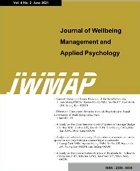- 권한신청
- E-ISSN2586-6036
- KCI
4권 3호
초록
Abstract
Purpose: This study was conducted to develop a module with higher removal efficiency and effectiveness by adapting two or more deodorization techniques for main cause of odor pollution exposed citizen living near water treatment facilities. Research design, data and methodology: To consider the standard, unity, electrical wire, compatibility of detachable device by installing two types of dry deodorization device within one module for easy replacement. Complex odor, H<sub>2</sub>S, NH<sub>3</sub> were collected from sewage treatment facilities for evaluation of deodorization device. Results: Using the developed application in this study, removal efficiency of complex odor, H<sub>2</sub>S, NH<sub>3</sub> were 93%, 100%, 82%, respectively. Conclusions: The H<sub>2</sub>S removal efficiency of deodorization device was higher than bio-filter system, which were currently used by sewage treatment. Further, the device should be considered for use in efficient odor removal system.
초록
Abstract
Purpose: This study aims to be used as a reference for setting the direction of university major education & policy. Research design, data and methodology: The satisfaction survey were nine major curriculum surveys for each college, targeting students enrolled in a university. One university consisted of 9 colleges and 49 departments or majors. The survey period is approximately one month. Results: The highest item in the major curriculum reflects the educational goal of the department, with a score of 3.95. Conversely, the lowest item is 3.65 points, indicating that the major curriculum offers a wide range of subjects to choose from. As the questions are higher than the average score (3.83 points), the major curriculum is helping me grow my competency through academic achievement (3.90 points), the major curriculum is helping me set my career and finding a job (3.88 points), The major curriculum suggests specific performance standards for judging the achievement of a set target competency (3.88 points), and the major curriculum reflects social demands and changes (3.85 points). Conclusions: Students want that their major education faithfully reflects the educational goals of their major and that major education helps their ability to grow for academic achievement.
초록
Abstract
Purpose: In the course of the domestic environmental impact assessment, the current status survey was improperly conducted, and the issue of false and inaccurate environmental impact assessment reports has been raised several times recently through media reports. Research design, data and methodology: There is a continuous demand for improvement measures for the current status measurement method, such as having difficulties in securing a normal measurement date in consideration of equipment operation and rainfall days in the field. Results: In addition, in order to grasp the general air quality status of the evaluation target area, it is necessary to check the various current status concentrations by season and time series per year. However, there is a problem that is currently being carried out based on limited results such as measurement for 1 day or 3 days. Conclusions: Therefore, in this study, based on the national atmospheric measurement network, an inverse distance weighted (IDW) interpolation method was applied to calculate the current state concentration. This study suggested a method to use it in preparing the air quality item in the environmental impact assessment report.
초록
Abstract
Purpose: In this study, skin and lotion containing 10% FRO were prepared to compare the skin improvement effects. Research design, data and methodology: After using cosmetics containing FRO ingredients, analysis was performed for 6 weeks. Results: As a result of measuring the moisture and elasticity of the pores, significant results were obtained only in the pores when used for 2 weeks between the experimental group and the control group (p<.001). Also after 4 weeks of use, moisture (p<.05) showed significant results, and after 6 weeks of use, moisture (p<.01) and elasticity (p<.001) showed significant.
초록
Abstract
Purpose: This aims to find a strategic plan for the feasibility study of a medical center extension project in order for local public medical institutions to obtain public interest and profitability through a survey of residents. Research design, data and methodology: The structured questionnaire was distributed at random, and a total of 219 people responded as users or patients responded to the questionnaire in a self-filling manner. Through this questionnaire, the feasibility and necessity of the extension of Gangneung Medical Center(GMC) was measured. All data processing was analyzed by applying version 26.0 of IBM SPSS statistical package program. The main contents of the questionnaire included reasons for using GMC, inconveniences, overall level of medical care, satisfaction, intention to revisit, the necessity of GMC's complex ward extension project, and GMC consisted of 8 questionnaires, including the desired service for the extension of the complex ward. Results: As for the necessity of the GMC complex ward extension project, 95.9% of residents said they wanted the complex ward extension project, 2.3% said it was not necessary, and the remaining 1.8% had other opinions. Conclusions: GMC complex ward extension project is necessary.














